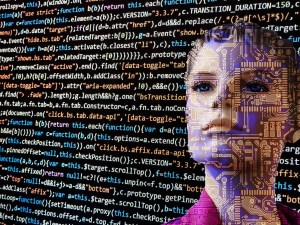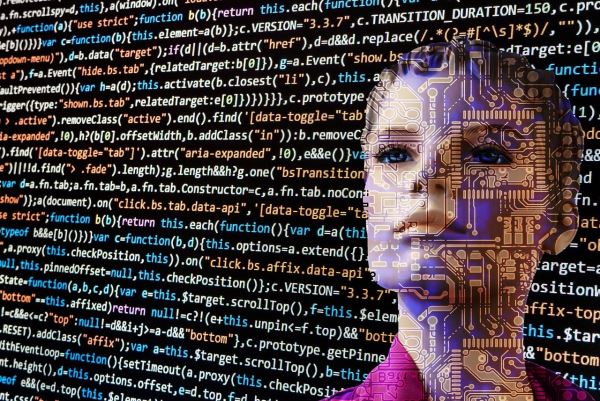If you thought the pace of digital transformation would slow down in the next few years, think again.
According to Gartner, a leading US tech research and advisory company: “Digital disruptions … show no sign of being reduced in frequency or impact. Instead, those who seek value from technology-based options must move faster as their bimodal IT efforts move into high gear.”
So what do the key analyst predictions mean for your business in 2018?
Here are these three digital transformation trends predicted for the New Year:
1. Artificial intelligence (AI) at every level
While artificial intelligence is nothing new, it has taken considerable leaps and bounds in just the last year.
Of the AI Summit San Francisco conference that took place in September, PWC’s Chris Curran and Anand Rao noted: “One continuing theme was just how quickly the technology – and corporate interest in AI – had advanced.
As conference organizers remarked: “In just one year the conversation has evolved from imagining what would be possible with AI to demonstrating practical use cases that are delivering tangible value.”
AI will continue to permeate just about every aspect of business, working quietly in the background of every app, application and service.
Bots and chatbots that can perform natural language processing (NLP) will become commonplace, leading the way for virtual customer service representatives and enterprise advisors and assistants.
In a recent Gartner survey, 52% of respondents indicated they were doing something about bots, chatbots and virtual assistants.
These AI applications have the potential to transform the structure of the workplace and the nature of the work itself.
This also has implications for search technology.
According to Gartner, mobile searches will move to voice or visual searches, and, by 2021, early adopter brands that redesign their websites to support visual and voice search will increase digital commerce revenue by 30%.
But before you start wringing your hands and worry about AI taking over jobs, the onset of general AI, where machines will be able to perform, think and learn as humans do, is some way off.
Rather, it is about narrow AI – AI that focuses on performing a specific task – and how this type of AI can be used to augment, rather than replace, human activity.
“Enterprises should focus on business results enabled by applications that exploit narrow AI technologies and leave general AI to the researchers and science-fiction writers,” said vice president and Gartner Fellow David Clearly at the Gartner 2017 Symposium/ITxpo.
Key takeaway
When thinking about how AI can transform your business, it can be easy to get carried away with the capabilities of the technology. However, avoid implementing AI for AI’s sake – instead, let business-led use cases drive development.
Curran and Rao suggest asking yourself these three questions:
- What parts of our business processes are high volume and low margin?
- What work frustrates our teams?
- What new markets do we want to enter?
2. The Internet of Things (IoT) continues to explode
As IoT devices become smaller and cheaper, IoT will continue to flourish, having far-reaching ramifications.
Gartner predicts that, by 2020, IoT will be in 95% of electronics for new product designs, as consumers come to expect smarter products and appliances.
This has implications for data processing and analysis, more of which will occur at the edge of the network.
According to IDC, 43% of IoT computing will occur at the edge by 2019, presenting a vast opportunity for early adopters.
We’ll also see digital twins – digital representations of digital objects – become a disruptive trend, with enterprises using these to monitor and control assets, allowing them to reduce asset downtime, lower maintenance costs and improve efficiency.
Eventually, digital twins could even be linked to more complex entities, such as cities or even human beings.
“Over time, digital representations of virtually every aspect of our world will be connected dynamically with their real-world counterparts and with one another and infused with AI-based capabilities to enable advanced simulation, operation and analysis,” says Cearley.
“City planners, digital marketers, healthcare professionals and industrial planners will all benefit from this long-term shift to the integrated digital twin world.”
Key takeaways
In order to stay ahead of the curve (or at least on it), IoT enablement should be built into most, if not every, electronic product. Organisations should also consider how best to employ edge computing to support IoT devices in their network, as well as how digital twins might assist in asset monitoring.
It is also important to consider how your organisation plans to address security concerns introduced by the deployment of IoT, particularly considering the increasing risk of distributed denial of service (DDoS) attacks.
3. Blockchain comes to the fore
While the conversation about blockchain tends to be dominated by bitcoin and other cryptocurrencies, the technology itself can have many other applications. Essentially an incorruptible digital ledger, blockchain eliminates the need for trust or a centralised authority, allowing transactions to take place quickly and without friction.
Blockchain powered smart contracts, in which terms are coded, irrefutable, and automatically executed once conditions are met, will be applied more frequently in business and legal contexts, reducing cost and errors, and saving countless hours in administration.
This will also result in the protection of intellectual property, as duplication will be prevented, and automated sale means copyright holders receive the financial benefit from their work. Businesses will also have a real-time ledger of their entire supply chain, allowing them to track assets and giving them a competitive advantage.
Key takeaways
As Gartner says: “A practical approach to blockchain demands a clear understanding of the business opportunity, the capabilities and limitations of blockchain, a trust architecture and the necessary implementation skills.”
While it holds a lot of promise, blockchain remains a relatively immature technology, at least in terms of its broader acceptance by institutions, and the infrastructure that is in place to support it. However, those organisations that are prepared for the onset of blockchain stand to reap the rewards.
Gartner recommends monitoring the evolution of the platform closely, and developing strategies to respond to broader market acceptance and adoption of the technology.
Keen to know more about Artificial Intelligence, Blockchain and IoT?
You can learn more at the CeBIT business technology conference and exhibition at the International Convention Centre Sydney, Darling Harbour from May 15-17, 2018.


